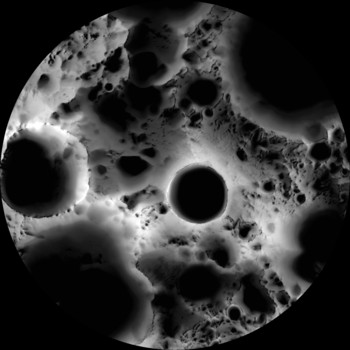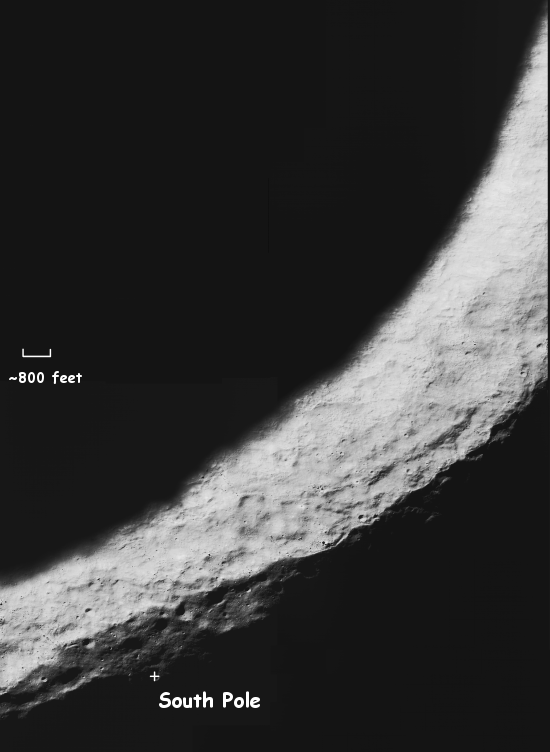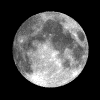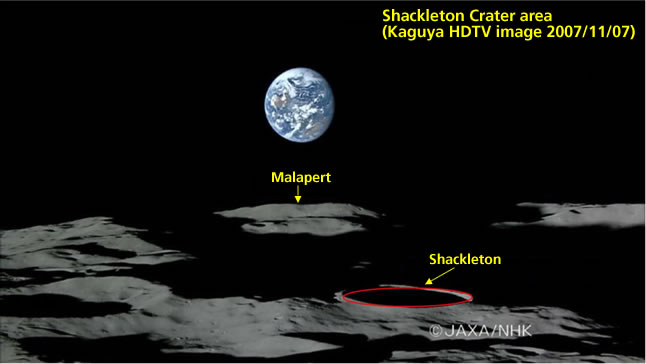Shackleton Crater is located on the south pole of the moon, at center coordinates of 89.54° S latitude and 0.0° E longitude. The crater is approximately 12.9 miles wide, and 2.6 miles deep. The interior of the crater has a 30° downward slope that stops at the crater floor which is about 4 miles in diameter.
The interior of the crater is dark. The peak along the rim is illuminated by sunlight 93% of the time which makes it an ideal location for conversion of sunlight into electricity by solar panels. This offers a good potencial for lunar landings. The rotational axis on the moon lies within the Shackleton Crater. Lunar crafts, such as the one from Japan have detected a higher than normal level of hydrogen in the interior, which may indicate the presence of water ice. NASA has named the rim of Shackleton as a potential candidate for it's lunar outpost, slated to be up and running and in continual operation by the year 2020, and continually staffed by a crew by 2024.
In one of the photos below, the red dot just below the rim is the approximate location of the south pole. The rim of the crater nearest the south pole is illuminated most of the time, but the crater floor is never illuminated. This w3as confirmed by the Japanese lunar probe Kaguya. Herem explorers are likely to find significant amounts of frozen water, making this the ideal location to build the first lunar base. As you see in other photos below, Shackleton rim is not the only location near the south pole where these conditions exist. As the photos show, there is ample room to land and set up a base and possible lunar colony. Daylight around the south pole can vary from 86% to 94% of the time. The place receiving most illumination (86% of the year) is located close to the rim at coordinates 88.74° S and 124.5° E. There are two other areas less than 6 miles apart from each other that receive sunlight 94% of the year.
MALAPERT MOUNTAIN is located about 74 miles away from Shackleton. It's peak is 3 miles high, and has perpetual visability from the Earth. This makes it an ideal location for a radio relay station. It's coordinates are 84.9° S latitude and 12.9° E longitude. It is another excellent area for an outpost. There are smooth landing areas, almost continual sunlight (90%) on the top and north side. It is close to shaded areas with high hydrogen content.
This makes both Shackleton Crater and Malapert Mountain a potencial for VALUABLE REAL ESTATE.
Below are 5 photos of Shackleton Crater
In the first photo, Shackleton is in the center





